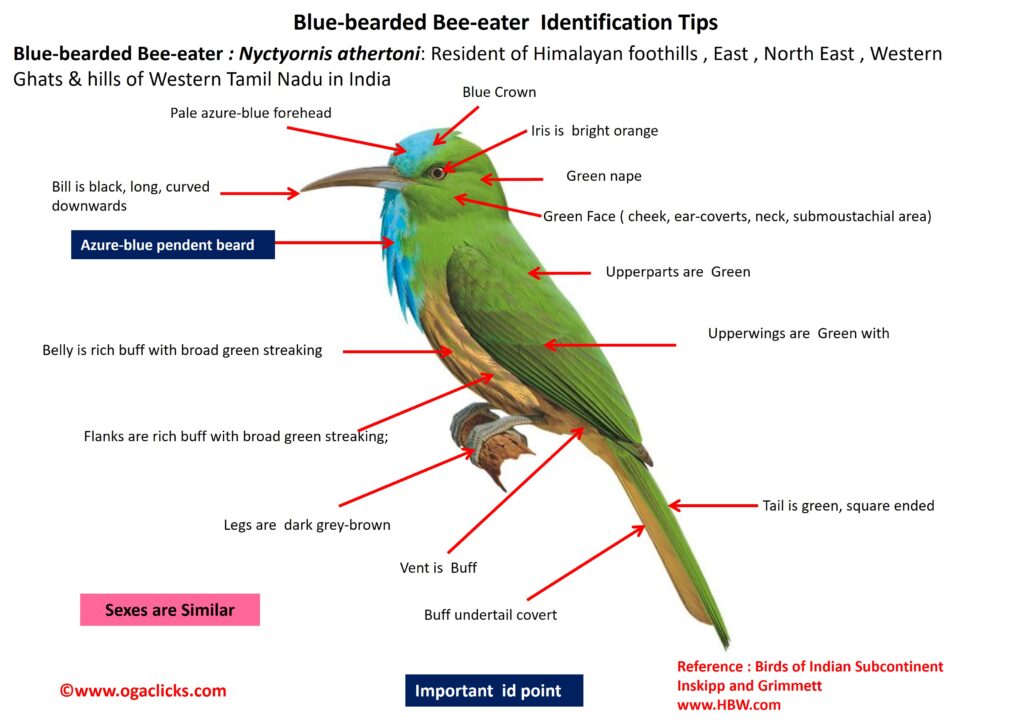
Blue-bearded Bee-eater Nyctyornis athertoni
Etymology
- Nyctyornis : nukti- nocturnal, night ; ornis – { Night bird}
- Athertoni: Named after British Naturalist Lt. J. Atherton (1797–1827)
Vernacular Name : Hindi: Nildum patringa, Pun: Wadda patranga, Bi: Dorla, Ass: Jeea khatee, Guj: Nilapunch pathrango Ta: Kattalan kuruvi, Panchankam, Te: Komu passiriki, Mal: Velitatha, Kan: Dodda patranga, Sinh: Kurumini kurulla, Natthal kurulla, Ranilla, Ambeya, Nicobar: Shale, Mar: Nilya shepaticha veda raghu
Distribution in India: Resident of Himalayan foothills North East, East ,Western Ghats and hills of Western Tamilnadu in India.
Description: It has a size of 31–35 cm; male 85–93 g, female 70–91 g. Its forehead is pale azure-blue; throat feathers are long and broad, forming pendent beard, the feathers are dark blue, grading to pure azure-blue on long radiating barbs at tip. The upperparts are green when fresh, fading or bleaching to bluish on crown, nape, mantle and tertials. The wing-linings are warm buff, belly is rich buff with broad green streaking; mouth is greyish pink. The lores and ring of featherlets around eyes are green; iris is bright orange. Both the sexes are alike. The juvenile is like adult, but iris is brown and has shorter bill.
Habitat : It is found in middle storey of moist deciduous and thick secondary evergreen forest in foothills dissected by ravines; also frequently found in moss-forest, forest clearings with scattered trees and gardens, and thin deciduous hilltop jungle with clearings. It is found from sea-level up to 2200 m.
Food habits: It eats flying insects, especially honeybees, carpenter-bees, wasps ,large beetles, dragonflies ,woodlice and fly pupae. The paired birds spend much time perched stolidly at or near outer side of tree, sometimes on top of tall flowering tree,.
Breeding habits: They breed in Feb–May. The nest is solitarily, but multiple tunnels may be present around each nest, either nest-holes from previous years or “false starts”. They excavate burrow in bank by forest path, sandy bank of stream, road cutting, or precipitous alluvial cliff face of forest ravine or earthslip. The burrow is level or slightly inclining, ending in unlined egg-chamber. They lay a clutch of up to six eggs. The incubating female is provisioned by male